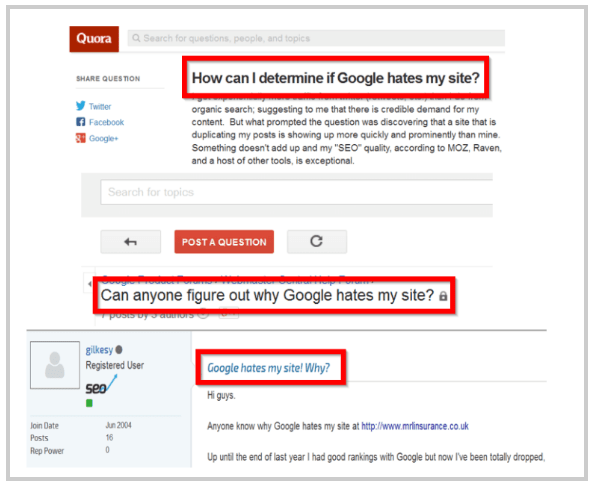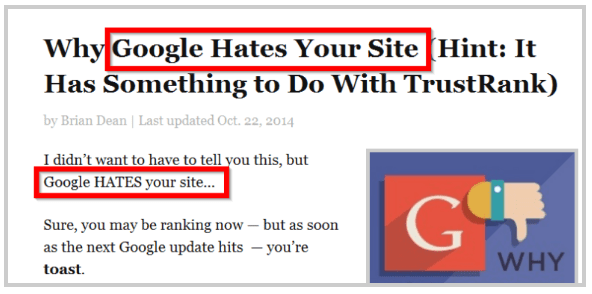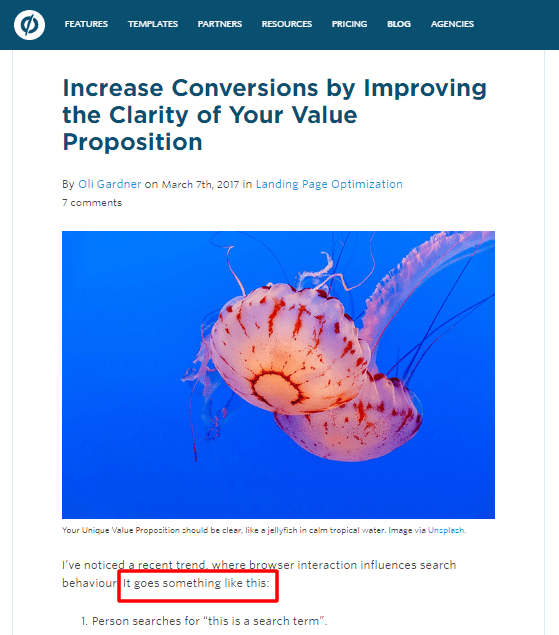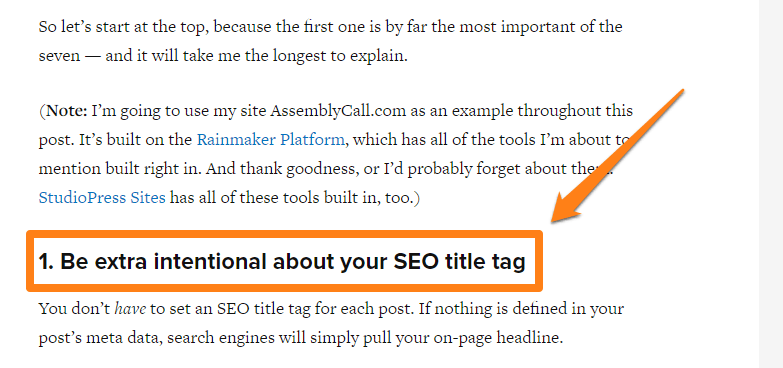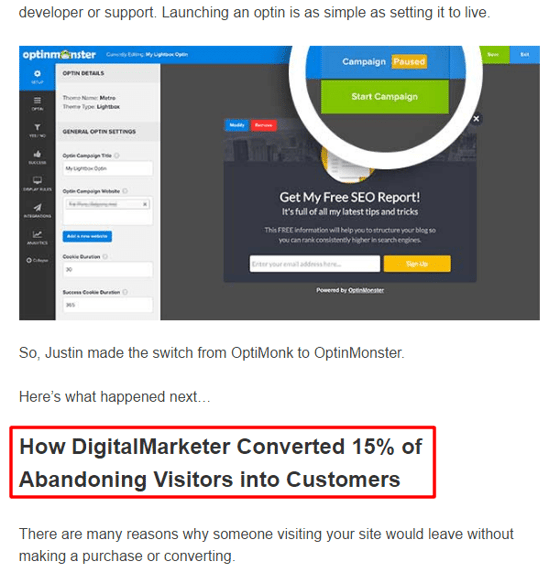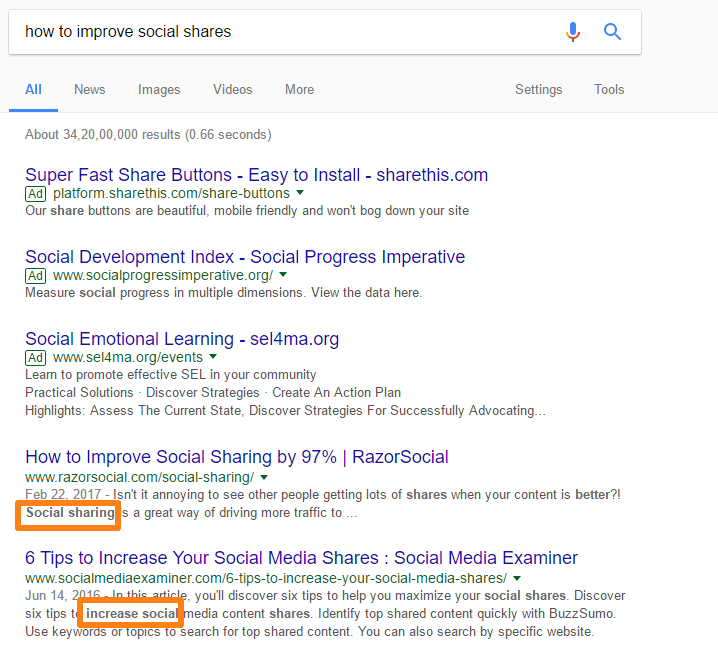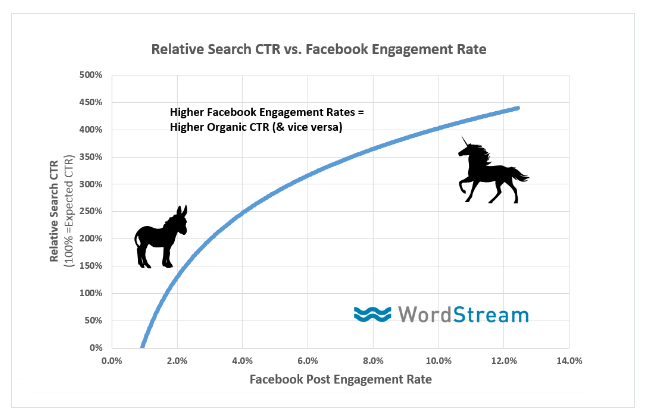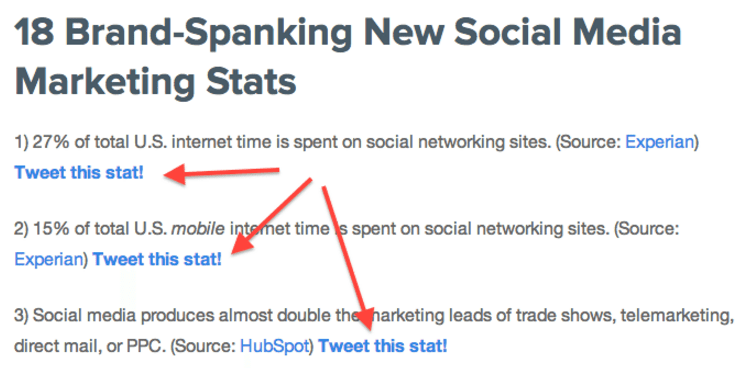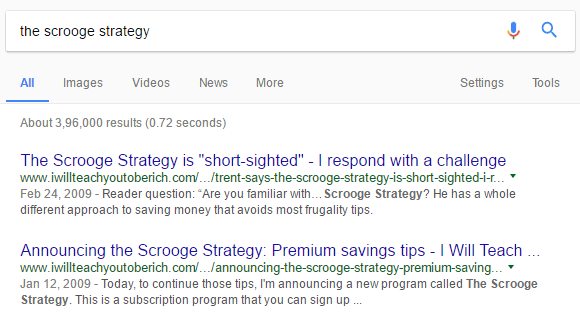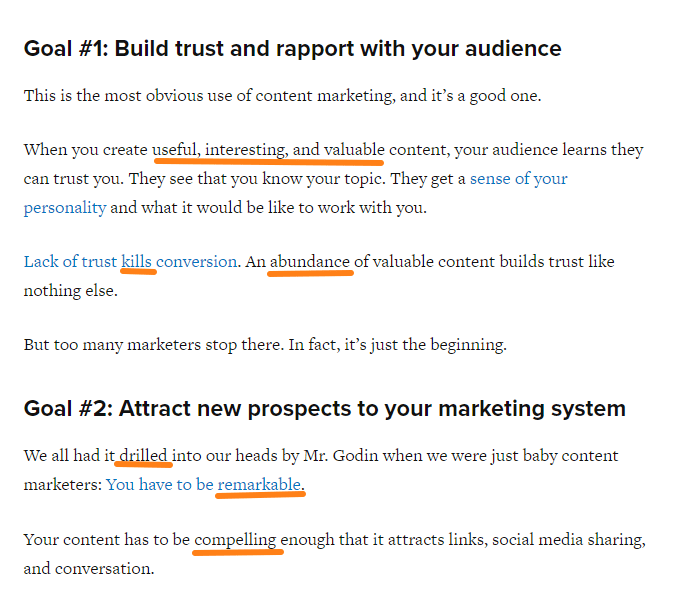7 SEO Copywriting Techniques Every Marketer Needs to Use
Once you get people to your site, how do you get them to stick around and actually read your content?
The solution: SEO copywriting.
SEO copywriting is incredibly misunderstood. A lot of people think of it as an alternative term for “keyword stuffing”.
In reality, SEO copywriting is like conventional copywriting with a search engine focused twist. IT involves using preferable phrases and structure to drive readers to action. It also involves creating content that makes it easier for search engines to rank your site.
I’ll demystify SEO copywriting in this article. I’ll also share crucial SEO copywriting tactics every marketer needs to know to succeed with SEO.

Key Takeaways:
- SEO copywriting is the art of strategically using words to persuade people to take action and to improve search engine rankings.
- Think like your readers and use phrases they would actually use when creating your content. Alternatively, create your own keywords by making up brand names and unique terms of ideas.
- Focus on clarity and engagement by using ‘bucket brigades’ and information-rich headings.
- Drive action by spreading mini-CTAs and power words throughout your content.
What is SEO Copywriting?
Copywriting is the process of using carefully chosen words to get people to take a specific action. As the American Writers and Artists Association puts it, a copywriter is a “salesman in print”.
SEO copywriting is about using words in a manner that gets people to read, share and like your content. It is also about helping search engines discover and rank your content better in SERPs.
Contrary to popular belief, modern SEO copywriting isn’t about keyword stuffing or optimizing LSI keywords. Instead, it’s all about delivering value to readers while meeting your strategic and tactical goals.
For example, a common SEO goal is to increase the amount of time readers spend on any page. Doing this improves your content engagement rate, which, in turn, can improve your rankings.
To meet this SEO goal, a SEO copywriter would strategically plan and create content that makes readers spend more time on the page. She might use copywriting tactics like “bucket brigades” (more on this below), add relevant images, or turn the content into a list to keep readers engaged.
At the same time, the copywriter would also add relevant headings and use the right keywords to make the page more search engine friendly. She might add a table of contents to improve navigation. She would also use the appropriate Schema.org tags to improve CTR in SERPs.
This, in essence, is what SEO copywriting involves: pleasing readers and search engines.
Essential SEO Copywriting Tactics
With the definition out of the way, let’s look at some actionable SEO copywriting tactics you can use in your content today.
1. Include The Exact Same Phrases In Your Content That Readers Use
Most people assume that keyword research is the extent of SEO required in copywriting. While keywords are important, your audience doesn’t always search for them. Often, people search for conversational words or phrases that relate to a keyword.
For example, let’s say your target keyword is “landing page design”
Instead of searching for that keyword directly, a large majority of users may type “tweaking my landing page” or “make landing page look better”. These phrases won’t show up in most keyword tools but it’s still important to target them.
One way to find such phrases is by hanging out in the same places as your audience. Here are a few places to check out:
- Quora
- Forums
- Blog comments
Browse through comments and discussions related to your niche on these sites and look for patterns in usage of certain phrases. Once found, use these phrase directly in the title or body of your content. Doing so increases your “deep” content score which is a ranking factor
For example, check out this example:
While browsing forums, Brian Dean of Backlinko noticed a heavy use of the phrase “Google hates my site”. Users weren’t asking why they couldn’t rank, nor were they asking for tips on improving their SEO. Instead, they were frustrated with their rankings and were wondering why Google “hates” their site.
As a result, he included this phrase in his headline and body of content for his next post.
By creating something that people actually searched for (instead of focusing on keywords), he greatly improved his content engagement rate.
2. Keep Readers Engaged With Bucket Brigades
When people land on your page, it only takes them a few moments to decide whether to stick around or “bounce”. If they hit ‘back’ too soon, Google views your site as low-quality and penalizes your ranking.
In SEO terms, this is known as “dwell time”. Both Google and Bing have been using it as a ranking factor for years. In fact, Duanne Forester, who ran Bing’s Webmaster Program, actually coined the term “dwell time”.
Here’s how you can solve your dwell time issue:
By using bucket brigade in your introduction.
Bucket brigades is an old copywriting tactic that adds conversational value to your content and ensures people keep reading. It works by using a colon to make part of a statement, then continuing the rest on another line – like the two sentences above. This creates a “chain” (i.e. a ‘bucket brigade’) that keeps readers interested in what you have to say.
Here are a few phrases you can use to set off a bucket brigade:
- Here’s the deal:
- Let’s begin:
- This is crazy:
Such phrases provide instant value to readers which prevents them from getting bored and abandoning your site.
More importantly, bucket brigades appeal to people’s inherent curious nature. In the hope of finding value around the corner, readers will spend an increased amount of time on your content page.
Check out this example from Unbounce:
They use a bucket brigade in their introduction. This ensures readers stick around long enough to safely cross Google’s time-sensitive algorithm to ensure they don’t get penalized.
Keep in mind that bucket brigades can be reused, so spread them out throughout your content. Look for areas where readers may lose focus or become bored and add a bucket brigade to increase readability of content.
3. Structure Your Subheadings to Reveal Key Takeaways
With access to information always a hand reach away. people expect to find what they are looking for quicker than ever before.
In other words, the human attention span is decreasing.
Use this behavior to your advantage by breaking down content with sub headers. These bite-sized titles divide your content into different sections and make it easy for readers to find what they are looking for. This ensures readers spend more time on your page.
Your subheaders need to be gripping and highlight value, otherwise readers will skip over them too leading them to leave.
Here are a few ideas to make engaging sub headers:
A. Focus on benefits
Sub headers that are vague don’t reveal much to readers. For example, a section titled “keywords” is too broad. It doesn’t differentiate whether content is about keyword density, keyword research, or why keywords matter to begin with.
Here’s how you can solve this:
For each sub heading, ask yourself why this matters to your reader. Your answer to this question is the sub heading that readers are looking for.
Check out this example from Copyblogger:
Instead of using a broad keyword like “SEO title tag”, Copyblogger uses a header that gives instant value to readers. A quick glance informs readers exactly what they can expect to find in this section and why it is useful to them.
B. Include numbers
Using numbers in your sub headers allow you to tap into the human mind’s natural desire to manage its expectation before they undertake a task. You are more inclined to read something when it has a definite length – “9 things”, “7 tips”, “4 tactics”, etc. – than something more ambiguous in scope.
Numbers also help quantify results. A vague qualifier like “improved rankings” in a SEO article doesn’t tell the reader much. But if you use a definite number – “improved rankings by 20%” – you will have an easier time reeling in readers.
Check out this example from OptinMonster:
4. Don’t Overlook Your Meta Description
Meta descriptions are a brief summary of content shown below your link in search results. This is the first thing people look at after reading your title. What you choose to say here plays a significant role in motivating readers to click-through to your content.
Remember, click-throughs are a signal to Google that your content is useful. Naturally, you want your meta description to be clear and persuasive so that potential readers stop scrolling and click-through to your content.
This means that you need a compelling meta description that ensures your content is clickable. Otherwise, your fate rests on Google’s algorithm which pulls up information from your content that it deems fit by default.
Let’s take a look at what makes great meta descriptions:
A. Use action-oriented language
Your meta description is effectively a CTA.
This is why it should feature actionable verbs such as “discover” or “grab” to motivate potential readers to take the initiative.
Take a look at this example from BeautyMNL:
B. Offer a solution
Mismatch of user expectation and your offer is a serious issue. You don’t want a reader to immediately leave your page because they could not find what they expected to.
A meta description that previews exactly what your content is about and offers a solution to a pain point reduces this risk.
C. Keep it short
Meta descriptions are supposed to be concise and to the point. Limit your description to around 156 characters. Anything longer than this will be truncated by Google and not seen potential readers.
D. Use alternative keywords
Earlier, Google used to only highlight keywords the user searched for within the meta description. That is, if someone searched for “improve social likes”, Google would only highlight improve, social and likes in the meta description.
That has changed today. Google now highlights the searched-for keywords and any close synonyms. In the above example, Google would highlight “increase” (synonym of “improve”) and “likes” (synonym for “share” in social media context).
In the example below, Google highlights social sharing and increase even though they aren’t a part of the original query:
5. Make Your Content Shareable
“CTAs are meant for your landing page and email marketing campaigns.”
Wrong.
You can add context-based CTAs within your content to urge readers to take actions that influence your ranking. For example, you might want more people to comment on your posts. Instead of just adding a comment form, encourage action by urging readers to leave comments.
Here are a few actions you can encourage using SEO copywriting:
A. Share content on social media
Google notices when people are sharing links to your site on social media. Beyond links, shareable content also drives engagement and increases CTR.
For example, every time someone tweets or retweets a link to your content, that’s a signal to Google that your brand matters to people.
One study found that higher Facebook engagement rates equalled higher organic CTR:
One way to encourage readers to share content is through copy.
Here’s how:
Simply add “Click to Tweet” or “Share on Facebook” to urge readers to share a data point or valuable information within their network. By vocalizing the activity, you can get more people to actually follow through.
Take a look at this example from Buffer:
Make sure that when readers follow-through, your message is already prepared with the message and link to your content.
B. Get more comments
Instead of having readers share snippets on social media, you can sway them to leave comments instead.
End your content with a thought-provoking question or simply request readers to leave their feedback to get the conversation flowing.
Check out this example from Social Media Examiner:
Notice how SMM tells readers that they’d “love to hear your ideas” to kickstart the conversation. Once the conversation starts to flow, more readers will be enticed to join in.
6. Create Your Own Keywords (Brand Your Content)
If there is one keyword that is easy to rank for, it’s your own.
Test this out:
Create content around a unique keyword, wait a few days, then run a quick Google search. Your content and brand should rank top for this keyword. This is also the reason why you usually rank first for your own brand name.
Tie your brand to unique keywords so that when others start creating content around this term, your brand always pops up first. For example, Ramit Sethi popularized the term “The Scrooge Strategy”.
Take a look at what happens when you search this term:
The first few results are tied to Sethi’s “I will teach you to be rich” landing page.
However, don’t blindly throw around a random keyword. Rather, create content around a popular pain point of your audience and name your solution as a unique keyword.
This will help your keyword get noticed and drive traction. As the term gains popularity, your site will enjoy a lion’s share of organic traffic for this term.
7. Get Acquainted With Power Words
Power words are critical in SEO copywriting. These are emotion rich words that compel readers to think, feel, and ultimately, to take action. Think of words like “amazing”, “powerful”, “compelling”, etc.
Readers react to these words by digging in and exploring your content in-depth. For optimal results, sprinkle power words in your headline, body of content, and CTAs.
If you need ideas for power words, check out this comprehensive list from Smartblogger.
For an example, check out this article from Copyblogger. Notice words like drilled, kills, abundance, etc.? These are emotionally rich words that paint a picture in the reader’s mind.
Conclusion
Copywriting that neglects SEO leaves well-written copy to languish online.
To unleash your content’s true potential, make subtle adjustments with help of a SEO copywriter to ensure long-term success of your business.
Which of these SEO copywriting techniques are you using in your content? Which one would you like to adopt?
Share with us in the comments below!


